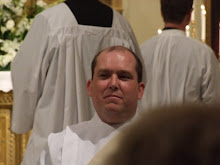On Easter and Updike
by David E. Anderson
Easter is not easy for most poets and writers, the difficult mystery of resurrection being more intractable than incarnation.
One of the best examples of the problem is perhaps the most famous Easter poem of the second half of the 20th century, John Updike’s “Seven Stanzas at Easter.” Updike identifies the difficulty in the opening line:
Make no mistake: if He rose at all
it was as His body;
if the cells’ dissolution did not reverse, the molecules
reknit, the amino acids rekindle,
the Church will fall.
The crucial word in the center of the first line—if—states what might be called “the Easter problem” starkly, and Updike’s insistence on the orthodox doctrine of the physical, bodily reality of the resurrection, even when hedged with the doubting if, provides a succinct but apt statement of one of the key themes of his work—the terror of death and the search for some sense, some promise, of overcoming, and he will not brook any evasions:
Let us not mock God with metaphor,
analogy, sidestepping, transcendence,
making of the event a parable, a sign painted in the faded
credulity of earlier ages:
let us walk through the door.
The tension between belief and doubt in the face of death, between faith and its opposite—certainty, and the need for resurrection run through all of Updike’s vast body of writing, from his early novels, stories, and poetry (“Seven Stanzas at Easter” was written in 1960, just a year after his first novel was published, and the poem was the winning entry in a religious arts festival sponsored by a Lutheran church on Boston’s North Shore) to his later work, including Due Considerations, his final collection of essays and criticism, and Endpoint, a posthumous book of poems published this month.
“Endpoint” does not directly address Easter, but its many meditations on Updike’s impending death—he died January 27 at the age of 76 and was battling cancer as he wrote many of the poems, specifically addressing his illness in a number of them—underscore the tension he wrestled with throughout his career between the fear of death and the hope for some kind of afterlife. In a poem entitled “Death of a Computer,” he writes of an old computer’s final crash and the “hopeful garble” on the monitor’s screen: “I in a spurt of mercy shut it down. / May I, too, have a stern and kindly hand / bestow upon my failing circuits peace.” In “Fine Point 12/22/08,” the last of the seventeen poems in the title sequence, he asks, “Why go to Sunday school, though surlily, / and not believe a bit of what was taught?” He praises Jews who “kept faith / and passed the prayers, the crabbed rites / from table to table as Christians mocked”:
We mocked but took. The timbrel creed of praise
gives spirit to the daily; blood tinges lips.
The tongue reposes in papyrus pleas,
saying, Surely—magnificent, that “surely”—
goodness and mercy shall follow me all
the days of my life, my life, forever.
Updike wrote in an early autobiographical essay, “The Dogwood Tree,” of his fascination with what he called “the three great secret things”—art, sex, and religion and how they combined and interacted in his artistic mission to “transcribe middleness with all its grits, bumps, and anonymities, in its fullness of satisfaction and mystery.” While the appreciations and obituaries that poured forth at his death duly noted how art, and especially sex, wove themselves into his work, few noted what British novelist Ian McEwan called Updike’s “religious seriousness,” his being “constitutionally unable to ‘make the leap of unfaith.’” . . .
read the rest here.
The complete "Seven Stanzas at Easter":
Make no mistake: if He rose at all
it was as His body;
if the cells’ dissolution did not reverse, the molecules
reknit, the amino acids rekindle,
the Church will fall.
It was not as the flowers,
each soft Spring recurrent;
it was not as His Spirit in the mouths and fuddled
eyes of the eleven apostles;
it was as His flesh: ours.
The same hinged thumbs and toes,
the same valved heart
that–pierced–died, withered, paused, and then
regathered out of enduring Might
new strength to enclose.
Let us not mock God with metaphor,
analogy, sidestepping, transcendence;
making of the event a parable, a sign painted in the
faded credulity of earlier ages:
let us walk through the door.
The stone is rolled back, not papier-mâché,
not a stone in a story,
but the vast rock of materiality that in the slow
grinding of time will eclipse for each of us
the wide light of day.
And if we will have an angel at the tomb,
make it a real angel,
weighty with Max Planck’s quanta, vivid with hair,
opaque in the dawn light, robed in real linen
spun on a definite loom.
Let us not seek to make it less monstrous,
for our own convenience, our own sense of beauty,
lest, awakened in one unthinkable hour, we are
embarrassed by the miracle,
and crushed by remonstrance.



